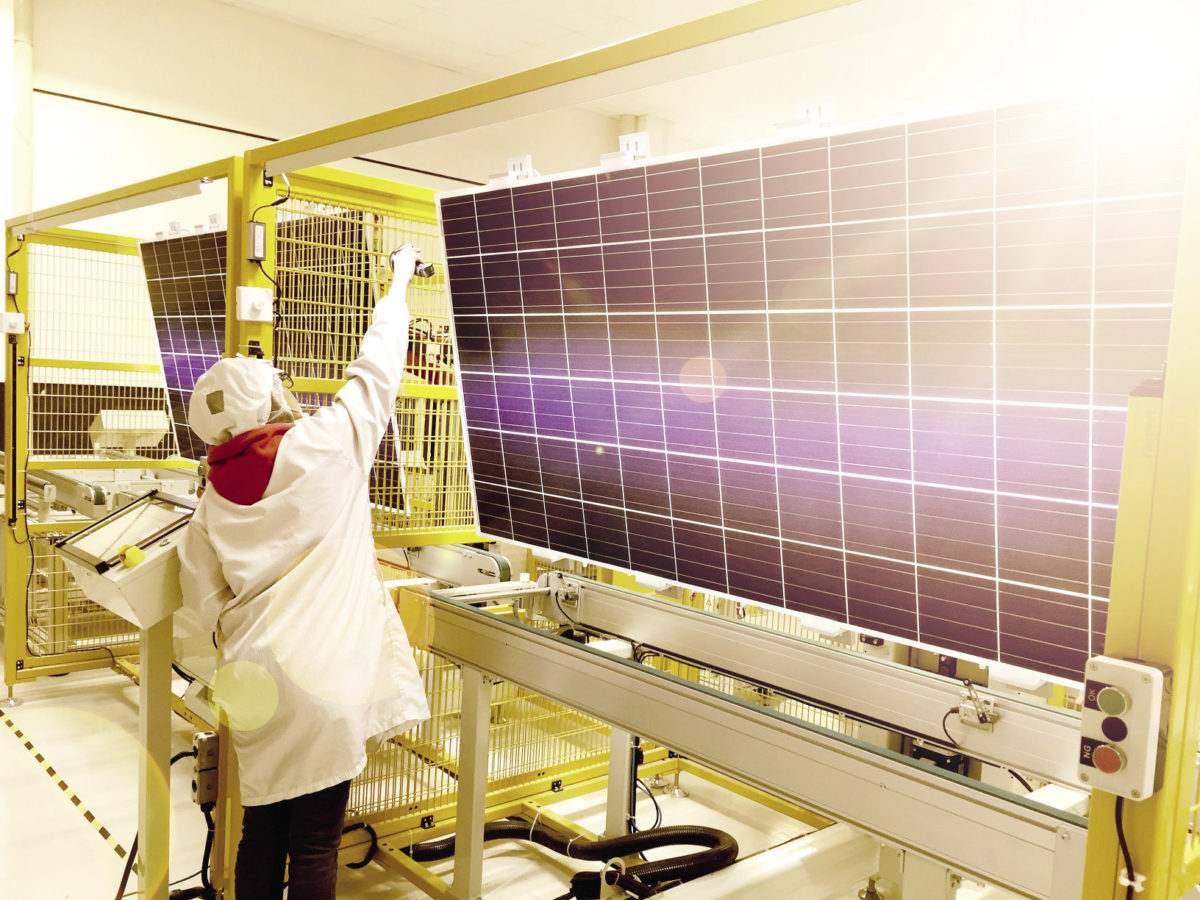With the Covid and post-Covid headwinds that have assailed the solar industry having thus far failed to dampen the rush by many manufacturers to expand production capacity, Canadian Solar has hinted it will wind in its expansion plans to reflect a “prudent capital allocation strategy.”
That was the phrase used by senior VP and chief financial officer Huifeng Chang, quoted in the Sino-Canadian company's third-quarter update today. Chang said: “We have scaled up manufacturing with approximately US$420 million of capital expenditure, year-to-date, and plan to reduce our full-year capital expenditure plan to approximately US$500 million.” The executive added the company “will remain disciplined in capital deployment.”
AgriPV
Solar PV could disrupt the fossil fuel industry and help with two of the biggest sustainability challenges of our times: biodiversity loss and food production. This year, pv magazine’s UP initiative shone a spotlight on agrivoltaics. Read our coverage here.
Chairman and CEO Shawn Qu, presenting the outlook for the business, said Canadian Solar would invest in upstream manufacturing capacity “while benefiting from overcapacity in the wafer and cell manufacturing levels,” and that statement was fleshed out in a table illustrating the production capacity plans of the China-based CSI Solar manufacturing business unit, which is set to float on the Shanghai exchange.
The Chinese business is still due to expand its annual solar wafer capacity from the current 9.5 GW to 11.5 GW this year, and will add another 600 MW of cell lines by year-end, to reach 13.9 GW. However, neither wafer nor cell capacity is due to be expanded next year. CSI Solar president Yan Zhuang explained the operation, next year, will be “selectively slowing capacity expansion plans to optimize utilization rates.”
Ingot capacity, due to rise from 5.1 GW at the end of September to 5.4 GW this year, is still due to go up next year, to 10.1 GW, and the same is true of module output, which will go up from 22.1 GW at the end of the last quarter to 23.9 GW this year and 32 GW next year.
Temporary concerns
Chief executive Qu said the company believes the material costs afflicting solar manufacturing – chiefly a rising polysilicon price – and the logistics problems represented by soaring post-Covid shipping costs are both temporary problems. Ontario-headquartered Canadian Solar expects to shift 3.7-3.9 GW of panels in the current quarter, with CSI Solar to ship 840-860 MWh of battery systems for total quarterly revenue of US$1.5-1.6 billion, helped by the sales of 1.5-2.1 GW of project capacity, although some of the latter may overrun into the opening months of next year.
Next year, the company said, it will ship 20-22 GW of modules, 1.4-1.5 GWh of batteries and 2.4-2.9 GW of projects, for revenue of US$6.5-7 billion.
Popular content
That is in part down to the company's ability to pass on some of those, apparently temporary shipping and polysilicon expenses. That was a strategy mentioned on more than one occasion in the latest update with CSI Solar's Zhuang stating his business has been “raising prices more aggressively.”
Qu too said the company was walking away from low-priced orders and would “control shipment volume to protect margins,” in the current trading period.
The same headwinds appear to be affecting Canadian Solar's project business, with Ismael Guerrero, corporate VP and president of the Global Energy, non-Chinese business unit stating: “Certain project construction schedules are starting to be delayed due to rising costs.” However the same solution to the problem appears to be doing the trick in the project business with Guerrero adding: “We continue to sign higher-priced PPAs [power purchase agreements].”
The figures
In terms of the third-quarter numbers, Canadian Solar shipped 3.87 GW of modules, up 6% from the previous window, but generated net revenue of US$1.23 billion, down 14%, quarter on quarter. Gross profit was up 24% on a quarterly basis, to US$229 million, helped by a US$12 million ‘true-up' supplied by the final numbers related to the anti-dumping and countervailing duty applied on products shipped to the U.S.
Higher shipping and handling costs pushed operating expenses up from US$158 million in Q2 to US$176 million, and a weakening Brazilian real against the dollar saw the business' foreign exchange losses in the quarter more than quadruple, from US$3 million to US$14 million, reflecting the fact the company is very active in Latin America.
That all added up to net income for shareholders for the quarter of US$35 million, up from US$11 million in the April-to-June period.
This content is protected by copyright and may not be reused. If you want to cooperate with us and would like to reuse some of our content, please contact: editors@pv-magazine.com.



1 comment
By submitting this form you agree to pv magazine using your data for the purposes of publishing your comment.
Your personal data will only be disclosed or otherwise transmitted to third parties for the purposes of spam filtering or if this is necessary for technical maintenance of the website. Any other transfer to third parties will not take place unless this is justified on the basis of applicable data protection regulations or if pv magazine is legally obliged to do so.
You may revoke this consent at any time with effect for the future, in which case your personal data will be deleted immediately. Otherwise, your data will be deleted if pv magazine has processed your request or the purpose of data storage is fulfilled.
Further information on data privacy can be found in our Data Protection Policy.